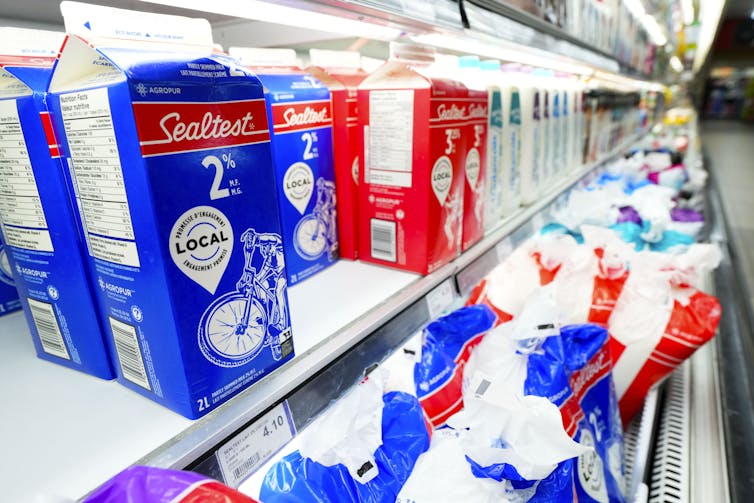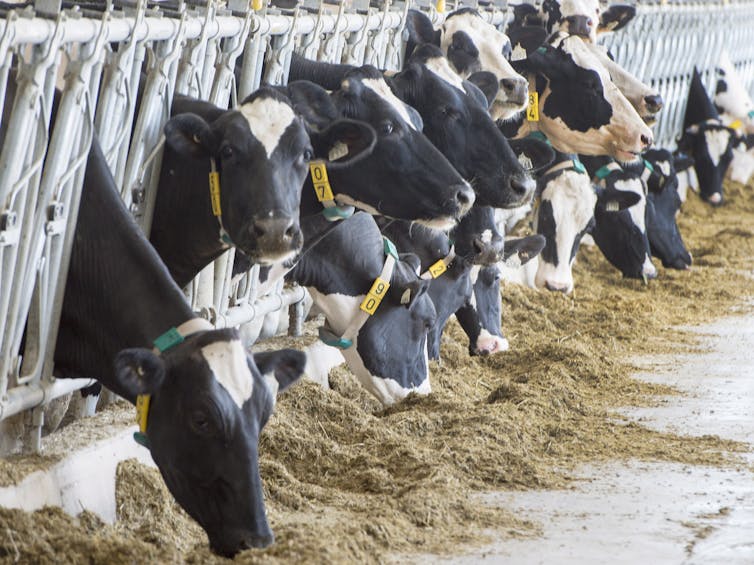A Brief Colonial History Of Ceylon(SriLanka)
Sri Lanka: One Island Two Nations
A Brief Colonial History Of Ceylon(SriLanka)
Sri Lanka: One Island Two Nations
(Full Story)
Search This Blog
Back to 500BC.
==========================
Thiranjala Weerasinghe sj.- One Island Two Nations
?????????????????????????????????????????????????Tuesday, June 14, 2022
Why New Zealand is right to call out Canada on its dairy industry
A cow waits in a paddock after milking on a farm near Oxford, New Zealand. New Zealand exports 95 per cent of its dairy products, and is challenging Canada’s protection of its dairy market. (AP Photo/Mark Baker
June 12, 2022
When it comes to dairy and free trade, Canada wants it both ways. New Zealand’s dairy dispute with Canada reveals the ongoing tensions within Canada’s trade agenda.
On May 12, New Zealand requested consultations with Canada over its administration of dairy Tariff Rate Quotas, known as TRQs.
TRQs are the reserved amounts of a good that are free from existing tariffs. Canada maintains high tariffs on dairy products to insulate its industry from foreign competition — but TRQs are exempt from these. These TRQs are broken down into different categories, like butter or milk powders.
Under the Comprehensive and Progressive Trans Pacific Partnership (CPTPP), Canada allows other countries to sell their dairy products at low tariffs for a set amount. The challenge is how to administer these amounts or TRQs. New Zealand maintains that Canada’s administrative methods are undercutting its CPTPP commitments to freer trade among signatories.
The problem for Canada is that New Zealand’s case is strong.
New Zealand’s case against Canada
New Zealand’s trade dispute alleges that Canada’s TRQ administration is reducing its market value by underfilling its dairy TRQs. As a result, New Zealand is not getting enough of its dairy products to Canada, and the products Canada does import are of lower value. New Zealand attributes this to Canada’s exclusive “pooling” of TRQs to processors.
Since 1995, Canada has administered its TRQs in pools that separated by their location in supply chains. For example, 85 per cent of Canada’s milk TRQs under the CPTPP are reserved for dairy processors that make products like cream and dairy powders.
Canada’s TRQ administration is skewed, given the vast majority of dairy products are allocated to processors instead of retailers. This means the countries that are a part of the CPTPP cannot get their products directly onto Canadian store shelves.

This is a major problem for a couple reasons. First, Canada’s allocation of dairy TRQs make it more difficult to maximize what the agreement allows for imports. In other words, it undermines efforts by countries like New Zealand to sell their products in Canada. Early signs seem to show this is the case.
Second, processors are more likely to buy cheaper products as inputs to more expensive goods. For example, an ice cream sandwich is a product manufactured using other — usually cheaper — dairy products. This could mean lost profit for New Zealand producers.
Fortunately for New Zealand’s case, the CPTPP is more thorough than other agreements. It specifies that TRQs are to be “no more administratively burdensome than absolutely necessary.” The agreement adds that countries cannot “allocate any portion of the quota to a producer group” or “limit access to an allocation to processors.”
Canada has lost before
If Canada loses the panel decision on the matter, it wouldn’t be the first time. The United States successfully advanced a similar request for consultation under the Canada-United States-Mexico Agreement.
The American dispute also identified Canadian pooling as unfair and inequitable. Canada argued that a processor pool does not constitute an allocation under the agreement. Canada added that the Americans were aware of its TRQ administration and therefore tacitly accepted it.
These arguments failed to convince the panel and Canada has yet to comply with this ruling. It seems doubtful Canada would succeed under CPTPP either, as both agreements have similar TRQ stipulations.
The better question is why Canada put itself in this position in the first place.

Canada’s trade agenda
Since Canada’s first trade agreement, there has been clear tension because even though Canadian policymakers want free trade, they also want some sectors to be exempt. Canada is not unique to agricultural exceptionalism, but it is among the world leaders of this practice.
While early trade agreements navigated this tension, recent agreements have struggled to do the same. Canada’s last three major trade agreements have each conceded more access to the Canadian market for foreign dairy producers. In return, Canada has offered direct compensation to dairy farmers and processors.
This shift in trade policy comes at a moment where free trade is under greater scrutiny. While trade partners like the United States are backing away from trade agreements, Canada is stepping forward.
This is part of Canada’s new trade strategy, the Inclusive Trade Agenda. This agenda aims to bring historically marginalized groups into trade. Women, Indigenous Peoples and the middle class are among these groups.
Global Affairs Canada adds that “communicating the benefits of trade and investment” is a key goal of the agenda, which seeks to curb “a perception of negative or divergent effects of trade and investment.” But this is more than a perception.
The Inclusive Trade Agenda is as much substantive trade policy reform as it is a re-branding effort. The agenda communicates Canada’s renewed commitment to free trade.
Selective free trade
The problem is that Canada is selectively embracing economic liberalization. Canada wants free trade only for some aspects of its economy. Canada’s trade policy is torn between two pathways.
There is nothing inherently wrong with insulating the dairy industry from foreign competition. Good arguments can be made in favour of exempting it.
But Canada can no longer have it both ways. Canada cannot concede on dairy then backtrack on those commitments while advocating for rules-based agreements.
The contradictions in Canada’s trade agenda have never been more evident. New Zealand’s dispute is a reminder that Canada must make difficult choices.
Canada can either promote a restrained trade agenda with few concessions, or fully embrace liberalization. Trying to do both will accomplish neither.

